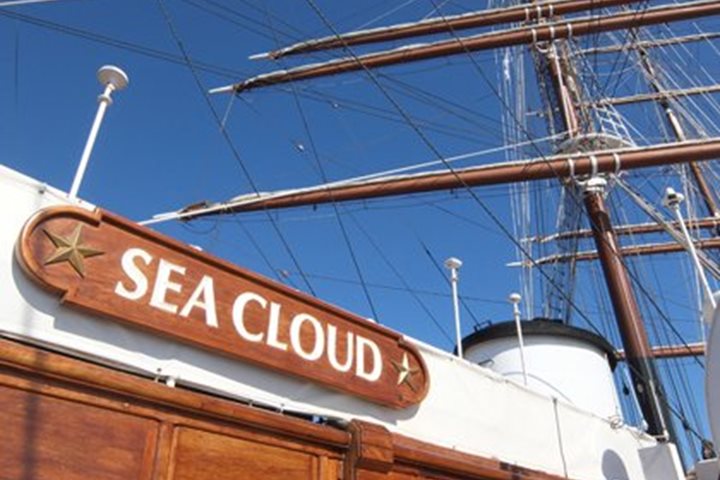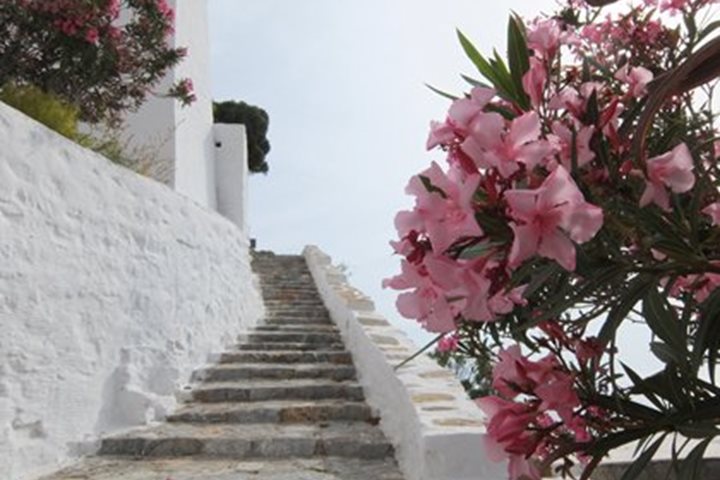We docked at the ancient port of Didyma at 8:30. The weather was perfect: a slight crisp breeze and blue skies welcomed us. I was excited at revisiting one of my favorite Greco-Roman archaeological sites. Didyma is the location of one of the greatest Ionic temples built to honor the god Apollo. We hopped on the waiting air-conditioned coaches and drove the short distance to the site. We arrived at 9 a.m. and were the only visitors present. What a treat to be alone in such a wondrous place.
The temple to Apollo was first constructed at Didyma in the 7th century B.C. but it was largely rebuilt after its destruction by the Persians in 494 and achieved its present configuration in the late 4thcentury. Today one approaches this magnificent building from above as the level of the land has changed dramatically in the last 2500 years. The temple contained 108 Ionic columns, so named because they were first developed in this part of the Greek world, Ionia. Architecturally the upper parts of the capitals of the Ionian temples resemble a rolled scroll looked at end on. They are mid-way between the severity of the earlier Doric mode and the flamboyant and later Corinthian style. The size of Apollo’s temple beggars the imagination: it is 109 meters long (325 feet) by 51 meters (150 feet) and it contained at one time 108 columns who rose 22 meters (66 feet). The temple seems to have been unfinished.
The temple is so lavish because Didyma was an oracular temple and was a rival to the famous Apollonian shrine at Delphi. Petitioners from all over the Greek world visited Didyma to bring their questions and petitions to the priestess. The petitioner, before entering the sacred precinct, paid a fee and offered a sacrifice. They were then led through two long dark tunnels before emerging into the light of the inner shrine. The effect of this passage was palpable as we all trooped down through the dark tunnels to emerge into the light of day. The priestess was seated on a tripod and gave the petitioner a cryptic oracle, which they then brought to the priests for interpretation. There is some evidence that the priestess at Delphi was inhaling a naturally occurring gas, which seemed to put her into a trance-like state. Much the same thing would have been present at Didyma. One of the greatest of Greek sculptural carving is the Medusa heads at Didyma. We marveled at their power. The snakes writhing amidst her hair still sent chills down my spine. We spent 1½ hours at this fabled shrine to the god of the sun and reason.
We arrived back at Sea Cloud just in time for a well-deserved swim in the sea. The water was cerulean blue and crystal clear 20 feet down. Of course it was then time for lunch and we had the famous Sea Clod pasta prepared in a massive round wheel of aged Parmesan cheese. The pasta is placed in a hole in the great wheel of cheese and as it is turned over and over it picks up cheese. Fabulous.
At 3:30 Tom Heffernan gave a lecture on the Bubonic Plague entitled “Gone, All Gone, My Children Lost: The Black Death and the Creation of the Modern European State.” Tom made the point that the plague had so weakened the Byzantine Emperor in Constantinople (modern Istanbul) that its collapse on May 29, 1453 was a foregone conclusion.
Tonight we were feted at the Captain’s farewell party. What a gala affair it was with much celebration at having been privileged to have had such a great journey and tinged with just a tad of sadness that it was drawing to a close. But of courses tomorrow we had the great city of Ephesus to look forward. We all went to bed greatly satisfied at such a wonderful day.









